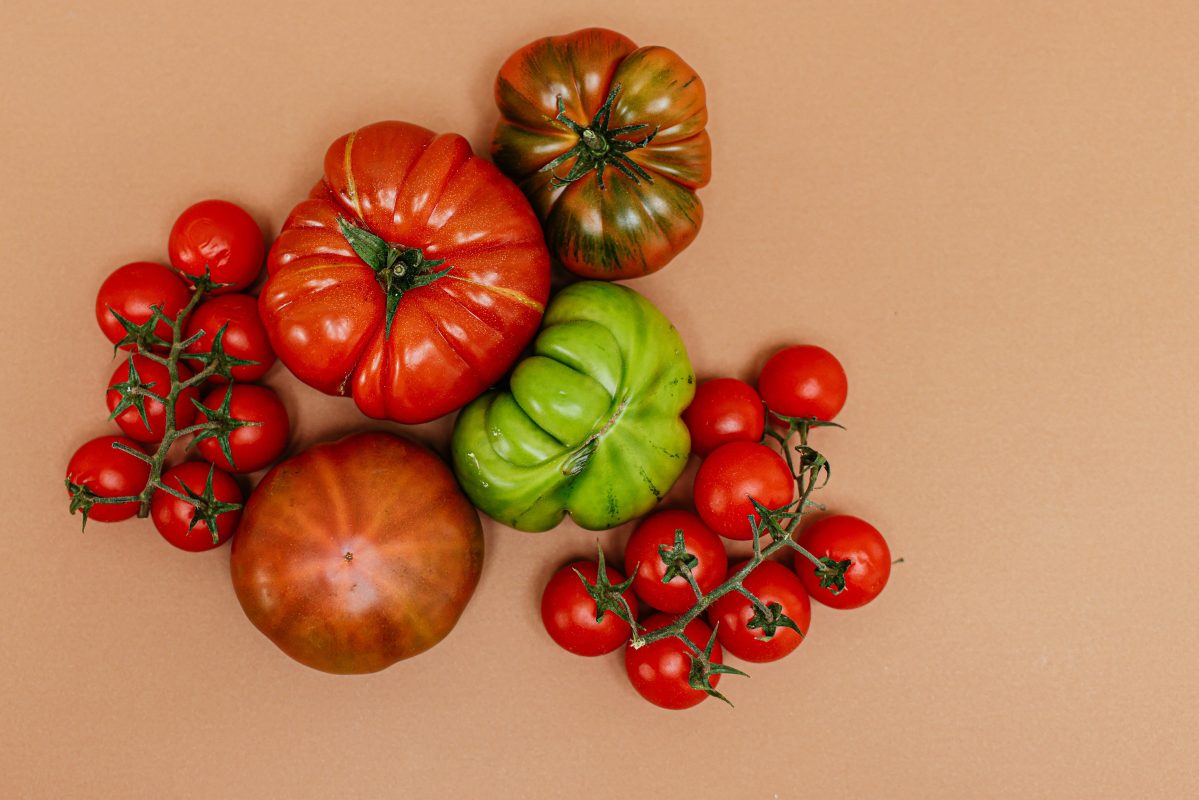Welcome to Tomato Week, a celebration of all things tomatoes! Yes, it’s a real thing (here at Lakeview) and you should tell all the others! Also, yes, I know we are months away from ripe fruit, but it’s almost planting time and I’ve been gardening long enough to have cultivated the extraordinary patience needed to wait for a ripe fruit!
But really, I do spend a surprising amount of time pouring through seed catalogs and horticultural websites looking for what new varieties Alec and I will grow for you every spring. I am amazed at how many new to market varieties show up every year and I’m equally amazed at how many varieties my grandmother grew that are still part of our every year greenhouse production.
We grow A LOT tomato varieties. Tomatoes are extremely versatile and are great for grilling, roasting, sautéing—even on their own as a healthy snack. Whether it’s a meaty Beefsteak or a small but snappy cherry tomato, there are no bad choices in tomato varieties. The challenge for most of us is finding enough garden or container space to plant all the tomato seedlings we bought!
With so many varieties of tomatoes to choose from, you might be left wondering “what’s the difference?” We often find our customers dazed and confused after a few minutes of staring at signs and labels at our tomato tables. Cherry or grape? Salad or slicing? Why is a paste tomato named Roma or San Marzano? For that matter, why is it called a paste tomato and not a “suitable for sauce” tomato? Tomato selection can be overwhelming! For that reason we’ve put together this guide to the different types of tomatoes and their uses so you can find the perfect tomato for you.
Tomato Uses Guide 2022!
Cherry & Salad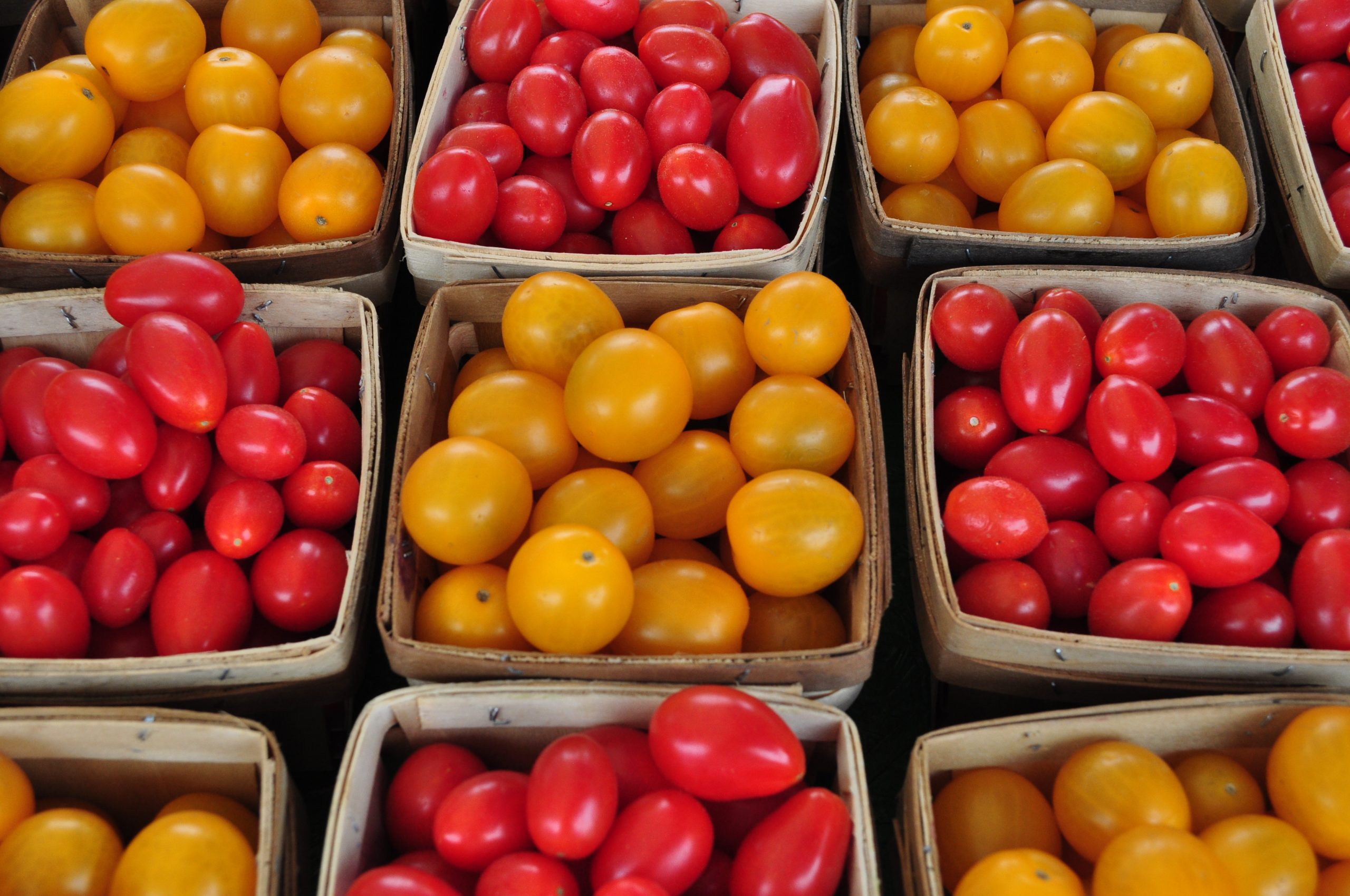
Fantastic
Fantastico is an early-maturing, high-yielding grape tomato with built-in Late Blight Tolerance. Long clusters of sweet tasty fruits are held toward the outside of the plant, making them very easy to harvest but if you let them go a few days past peak, these little beauties resist cracking better than other varieties.
Juliet
Famous for yielding the first elongated, grape-like fruits that don’t crack! A unique bush tomato with tasty half-ounce grape shaped fruit. High yielding plants produce up to 12 pounds of ripe fruit. Best grown in a cage to provide some plant support. Clusters of unusual, sweet-flavored fruits cling to the vine longer than most other cherry tomatoes. Resistant to Leaf Spot. Juliet is fairly invulnerable to insect or slug damage. In fact, the only damage we’ve seen to this fruit is from hungry mice and bunnies!
Sun Sugar
We’ve tried several other varieties, but we think this is the sweetest golden cherry. Attractive, golden-yellow color and its extraordinary sugar-sweet flavor make this one perfect gourmet cherry tomato! If you let the fruit mature on the vine long enough, they will turn orange! This disease-resistant plant is one of our very best cherry tomatoes and is easy to grow. Plants are resistant to fusarium wilt and tomato mosaic virus. Thin-skinned, 1/2-ounce, crack-resistant fruits. Best grown with a cage for support.
Super Sweet 100
Our most popular tomato year after year! When Sweet 100 tomato was first introduced it created a buzz among gardeners because it is so tasty and produces for such a long time. Now, its improved cousin, Super Sweet 100 hybrid, bears the same long, branched clusters of deliciously sweet tomatoes high in sugar. Super Sweet 100 is known to be more disease resistant, giving plants a better chance where certain problems may be soil-borne. You’ll be eating them right off the vine before they ever make it to the salad bowl! Give them a tall support because they grow and grow over the top of the cage and back down again. Resistant to verticillium wilt and fusarium wilt.
Patio
Patio is it’s name and growing in containers is it’s game (forgive the plant geek humor!). Patio hybrid is excellent for containers and small gardens. It bears tasty 3 to 4 oz tomatoes on strong, compact plants that grow only 2 feet tall. The stout stems generally do not need much staking. This little plant is surprisingly productive. In really great summers I’ve gotten up to 30 or more tomatoes per plant over an 8-week harvest period. Perfect for containers. Patio is resistant to fusarium wilt, alternaria stem canker, and gray leaf spot.
Beefsteak AKA HUGE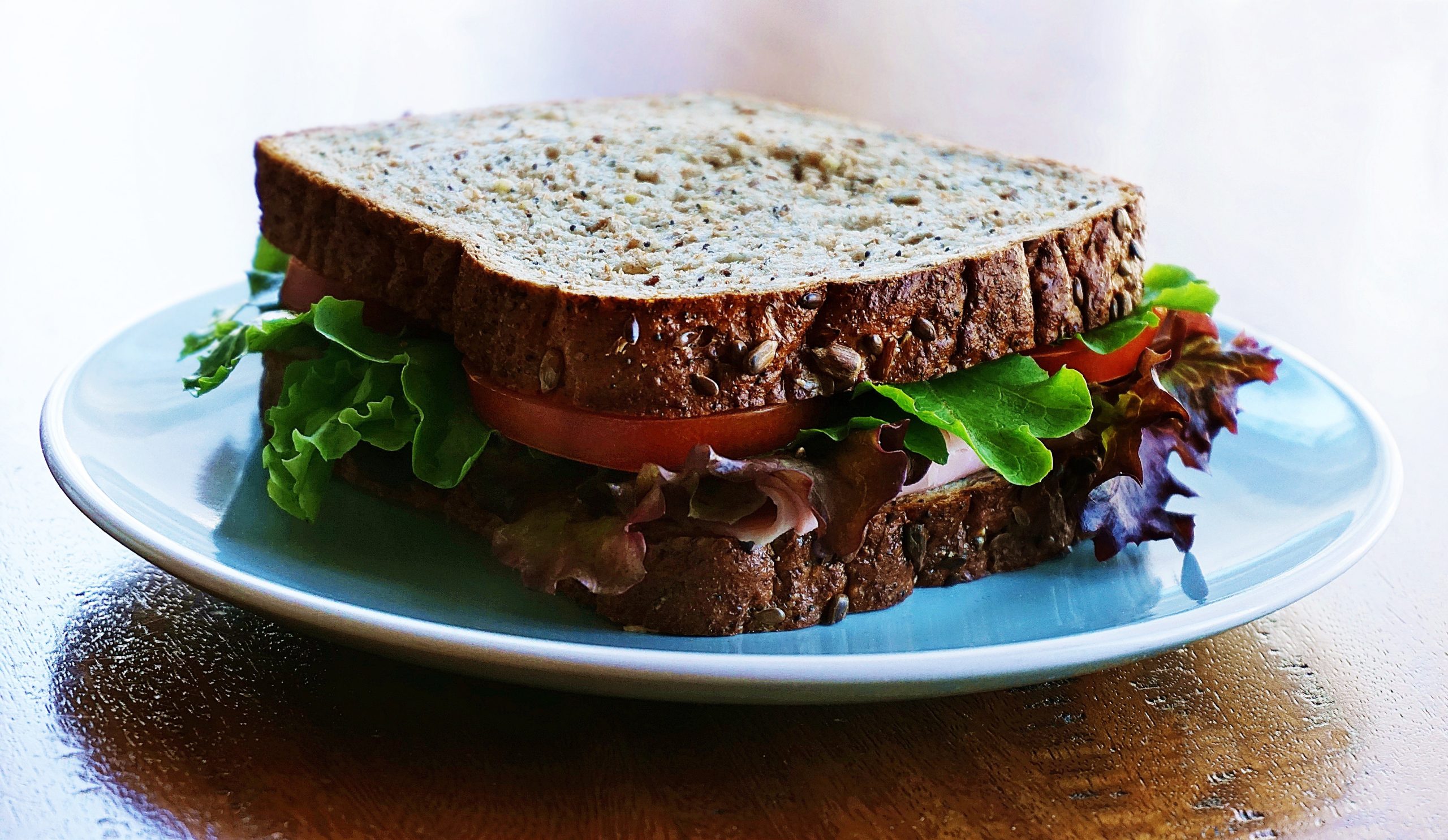
Beefmaster
If you want to grow big tomatoes, Beefmaster is for you. Beefmaster tomato plants produce huge tomatoes, up to 2 pounds! Beefmaster are vining tomatoes that will require staking or a cage. They also have a long growing season (80 days from seed) so this variety will be one of the last to mature in your garden. Here’s more plant geekiness for you – There are around 13 species of wild tomato plants and hundreds of hybrids. Beefmasters are categorized as F1 hybrids, which means they have been cross bred from two distinct “pure” tomatoes. What this means to you is that the first generation will have vigor and produce larger yields, if you save seeds, the successive years’ fruit will likely be unrecognizable from the previous one.
Carolina Gold
The Carolina Gold tomato features a unique golden-yellow colored fruit that is low in acid and uniform ripening. This variety is a smaller plant size to many other Beefsteaks but it will still need staking or a cage. It’s a long season grower so it will be late to mature in our gardens and oftentimes most of the fruit ripen all at once so you’ll get one big harvest. Resistant to Verticillium wilt and Fusarium wilt
Paste (AKA sauce)
La Roma
This variety is my family favorite for tomato paste and sauces. Roma produces a large harvest of thick-walled, meaty, bright red, egg-shaped tomatoes about 3 inches long and with few seeds. This tomato is not juicy which is why it’s prized for sauces. This is not a slicing tomato. Instead, the flesh is thick and drier so that it will cook down into a thick sauce. Cooking intensifies flavor, too. If you can tomatoes, make your own spaghetti sauce, or like to chop a tomato into an omelet, this is a great choice. The compact vines are resistant to verticillium wilt and fusarium wilt.
San Marzano
San Marzano tomatoes proudly maintain characteristics of the perfect paste, puree or canning tomato. San Marzano matures in clusters, holds well on the vine and in storage, is crack resistant, and processes well due to its solid nature. For these reasons, San Marzano Tomatoes remain Italy’s top choice as the perfect canning tomato. Compared to the Roma tomato, San Marzano tomatoes are thinner and more pointed. The flesh is much thicker with fewer seeds, and the taste is stronger, sweeter, and less acidic. The compact vines are resistant to verticillium wilt and fusarium wilt.
Heirloom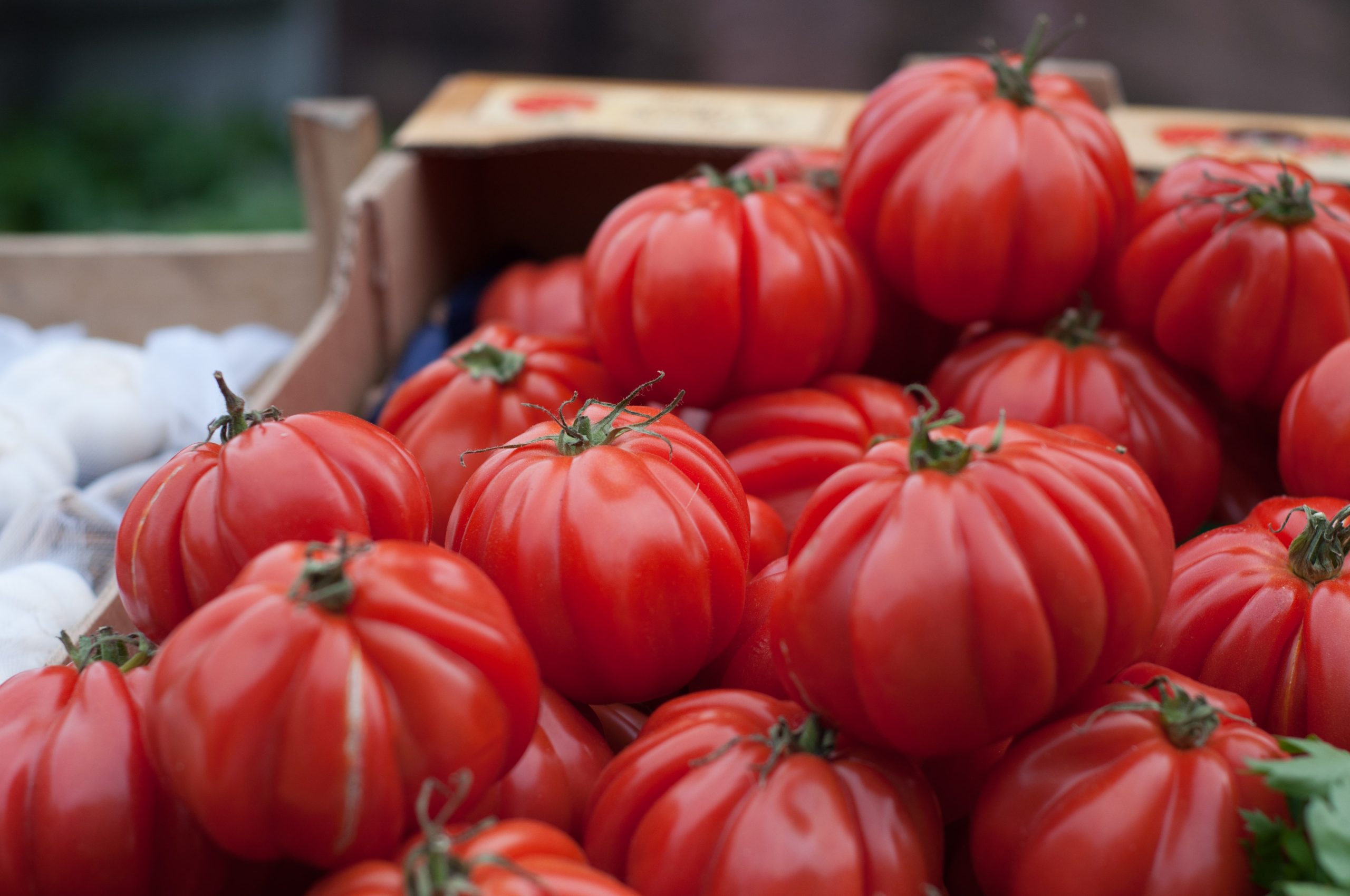
Brandywine Red
Red Brandywine tomato is an old Amish heirloom tomato dating back to 1885, and it’s so good we still grow it today! This is a large, vigorous plant that has an unusual potato leaf foliage and produces extra-large, lobed fruit that can weigh up to 2 lbs. Red Brandywine has an excellent old-fashioned tomato flavor. This variety ripens late (but worth the wait) so you’ll want to bring your patient gardener pants for this one.
Rutgers
An old favorite, Rutgers is a proven variety that is highly productive. The large, red fruit has a thick flesh with superior flavor. I like growing this variety because it yields a large initial crop that is followed by several smaller harvests. This is one of those classic tomatoes that has been used as a parent in the breeding of many other hybrids. Seldom has problems with cracking. Resistant to verticillium wilt, fusarium wilt, and alternaria stem canker.
Slicing types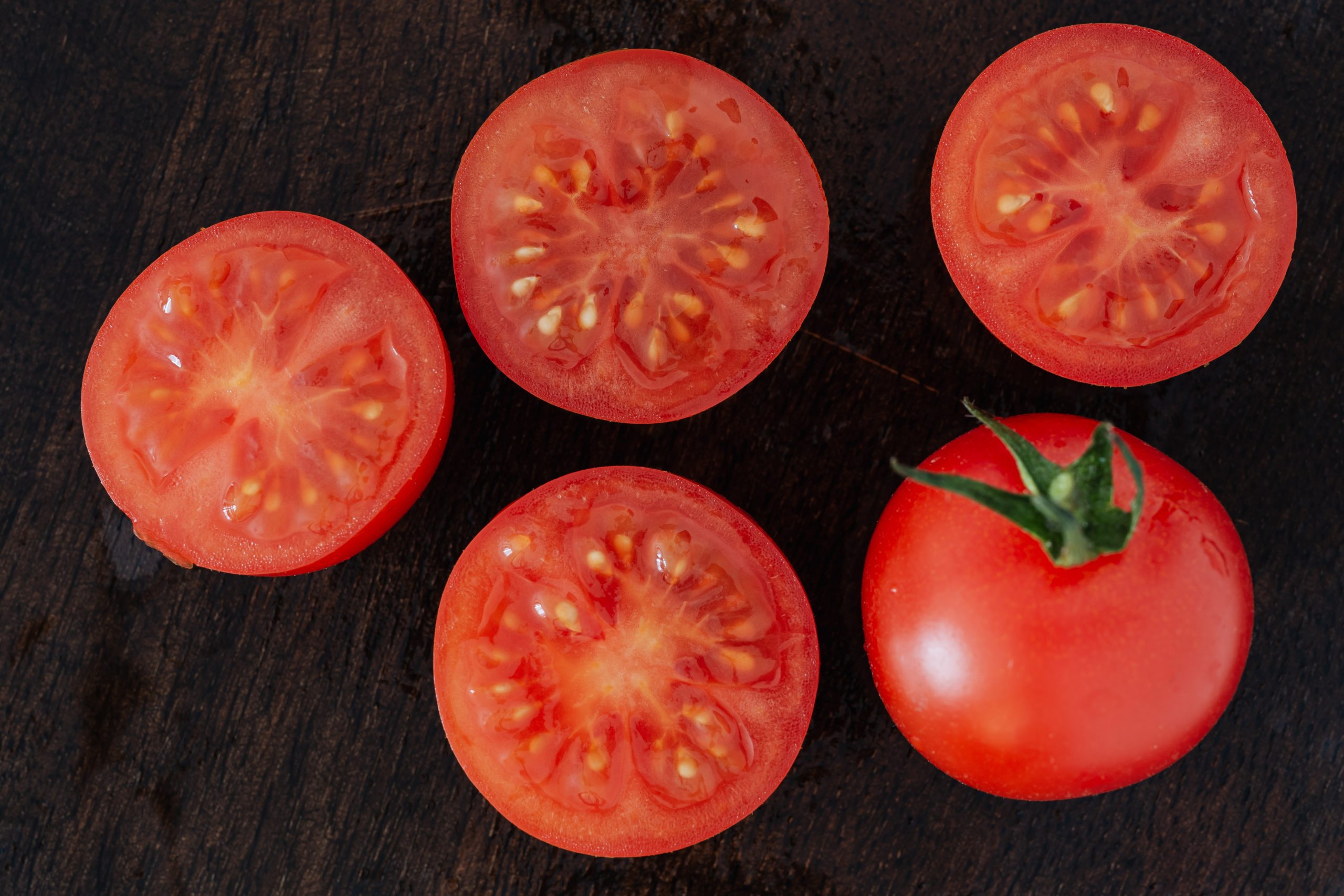
Big Boy
The name, Big Boy, says it all.! This is a big, sandwich-type slicer with smooth, bright red fruit and a flavor that everybody likes. It bears heavily in mid-season, yet the indeterminate vines continue fruiting (though not as heavily) until frost. I’ve often gotten a full 10-week harvest from this variety. Big Boy will need staking, or grow the plant in a tall cage. Resistant to cracking.
Better Boy
High yields of smooth skinned, large fruit earns Better Boy a spot in my garden every single year. It’s one of the most common in the US and it’s one of our all time best sellers. The fruit has excellent classic tomato flavor with just the right balance of acid and sugar. This is a great slicing tomato. Grow it in a tall cage or tie to a stake for support. Resistant to verticillium wilt, fusarium wilt, and nematodes.
Celebrity
Celebrity tomatoes bear clusters of medium-large tomatoes that are prized for their flavor. This is a great, all-round, dependable choice for your “basic” tomato needs — sandwiches, slicing, snacks, and bruschetta so we recommend this one often. We especially love that the plants are quite resistant to disease, too. The large, meaty fruit with exceptional flavor are borne on dependable, strong stems that benefit from the support of a cage or stake to keep them upright, especially when loaded with fruit. Resistant to verticillium wilt, fusarium wilt, nematodes, and tobacco mosaic virus.
Early Girl
Impatient gardeners often ask me for the “first” tomatoes and Early Girl is my go to. I think this variety is the most all-round best to satisfy that itch for the first fresh tomato of the season. I use them for slicing, into salads, or on a sandwich. This is a proven all-round early hybrid. Use it to jump start your harvest. Early Girl bears lots of fruit for early harvest, but because the vines are indeterminate, they continue producing through summer. When growing conditions are ideal (sunny, hot and dry) I can harvest an average of 50 tomatoes from each Early Girl plant! Resistant to verticillium wilt and fusarium wilt.
Jet Star
Just as popular today as it was in 1969 the year it was introduced. Jet Star has remained popular because of it’s heavy yields of firm, meaty, low-acid tomatoes that are crack-resistant. Another advantage is that the plant is fairly compact but we still recommend a cage or staking especially when it’s loaded with fruit.
Phew, that’s a lot of tomatoes to pick from — but it’s not even close to a complete list of what we grow! Purple, black, orange and stripped, yup, we’ve got those too. We know we have a tomato problem, but what else is a New England plant geek supposed to do in the winter if not falling in love with every tomato variety listed in our extensive seed catalogs!
Alarmed at all those “resistant to” virus and disease names listed after every variety? Each year I marvel at how many tomatoes my little garden has produced given the bug and disease challenges they face! I often ask myself “How did I even get one ripe fruit, considering what could have happened?”. So many problems: No fruit. Only green fruit. Fruit with spots. Fruit with black bottoms. Fruit with cracks. Fruit eaten by marauders of every taxonomic order. DO NOT PANIC – tomatoes really aren’t that difficult (sorta). Because I’ve made this tomato week and I’m all about celebrating tomatoes, stay tuned for my next blog about their challenges and get my best advice on how to avoid or deal with them.
Until then, let’s celebrate tomatoes because it’s Tomato Week. I totally made that up but I think it should be a thing so you should tell all the others!
Michelle and the Plant Geeks at Lakeview

